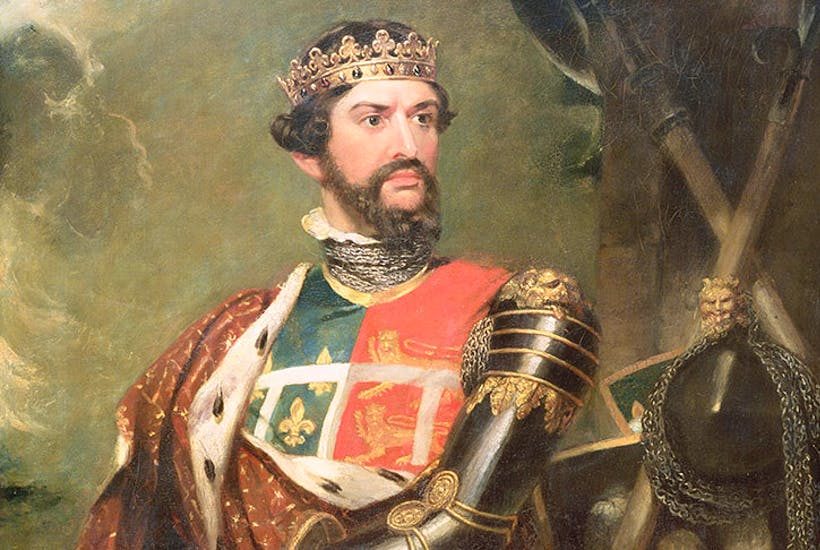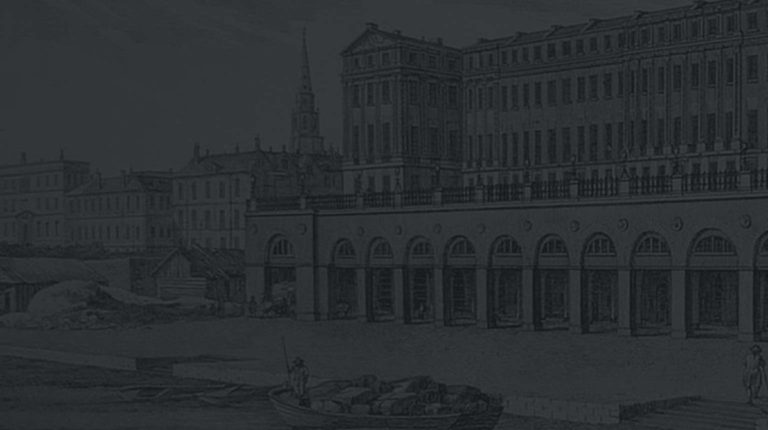
The Black Prince was known as Edward of Woodstock during his lifetime. It is traditionally said that his nickname came from his armour, but there is no contemporary evidence for this; it was first quoted in documents in the 1530’s.
Edward the Black Prince (1330-76) was the oldest son of Edward III (1327-77), and consequently heir to the throne. However he pre-deceased his father, so his father was succeeded by the Black Prince’s son Richard, who was crowned as Richard II.
Edward The Black Prince was one of the original Knights of the Garter and was the first Duke created in England, as the Duke of Cornwall in 1337; he was later created Prince of Wales in 1343 and Prince of Aquitaine in 1362. In the previous year he had ignored marrying as a diplomatic tool, and married in a love match his widowed cousin Joan, Countess of Kent, who was famed for her beauty. He moved with her from their home in Berkhamsted, Herts to live in his new domain in France.
Edward was renowned in his own lifetime as one the greatest knights of his age, a model of chivalry and one of the outstanding commanders of the Hundred Years War. At the battle of Crécy (1346), aged just 16, Edward was in the forefront of the fighting and provided charismatic leadership, while his father commanded his men from the height of a nearby windmill. Towards the end of the battle, the blind king John of Bohemia defiantly charged towards the melée bound to his knights by ropes, and the whole group were killed. Edward was so impressed by this that he adopted John’s badge and motto, an ostrich feather and the words Ich Dien, which is probably the origin of the Prince of Wales’ feathers and motto.
Edward campaigned in France for the next ten years, and at the battle of Poitiers (1356), in a major victory, he defeated and captured the French king John II (the Good), for whom a huge ransom of £500,000 was paid. English archery again proved decisive.
In 1367 he lead an expedition to Spain to restore the deposed Don Pedro of Castile to the throne, which he achieved in another notable victory at the battle of Najerá, in northern Castile. He contracted an illness there, as did many of his troops – it was said that scarcely one in five of his soldiers returned home – and Edward returned to his home in Aquitaine. While there he was not a successful administrator, leading to a revolt, which resulted in the brutal sacking of Limoges (1370). He returned to England in the following year in poor health, gave back the rule of Aquitaine to his father in 1372, and died in 1376 at the age of 45.
Pavillon d’or of Edward the Black Prince
This gold Pavillon d’or was struck at Bordeaux in Gascony, Aquitaine, of which Edward was Prince. No coins were struck in England in his name.
The coin was introduced near the beginning of his reign, in or before 1364. It was valued at 60 sterlings or 25s 0d bordelaise (a currency system of Aquitaine), and was originally known as a Noble Guyennois. The letter B at the end of the reverse legend denotes the mint of issue.
In a design reminiscent of the age of chivalry and the feudal system, we see the celebrated military commander standing below a gothic arch or portico, a device used extensively in the beautiful series of gold coins in the Gothic style in France and the Low Countries in the 14th century. The arch on this coin is particularly elaborate, with a tower, Geometric tracery windows and flying buttresses. The abbreviated legend translates as Edward, first-born of the king of England, Prince of Aquitaine. The four ostrich feathers on either side of him are the newly adopted badge of the Prince of Wales, borrowed from John the Blind of Bohemia whom he defeated at the battle of Crécy. The Prince is holding a sword, and wears an ermine mantle; two leopards are visible at his feet.
The elaborate, highly decorated design on the reverse is barely recognisable as the original form of a simple cross from which it was ultimately derived. The English and French symbols of a leopard and lis appear in the angles. In the centre of the cross a small letter E (for Edward) indicates that this is from the second, slightly later issue, replacing a small rosette in the centre of the first issue coins. The design of the second issue differs marginally from the first, in the detail of the Gothic arch and particularly in the improved clarity of the leopards at the Prince’s feet.
These attractive coins are rarely found in really good condition and clearly struck. This specimen is particularly well preserved, and very well struck for the issue. It has a distinguished pedigree, dating back to the famous Montagu collection of the late nineteenth century, one of the largest and most famous of all British collections.

View the coin
Ex Montagu collection, Sotheby, 17 July 1897 (lot 336) (realised £4/4/-)
Ex Hirsch auction XX, lot 327


